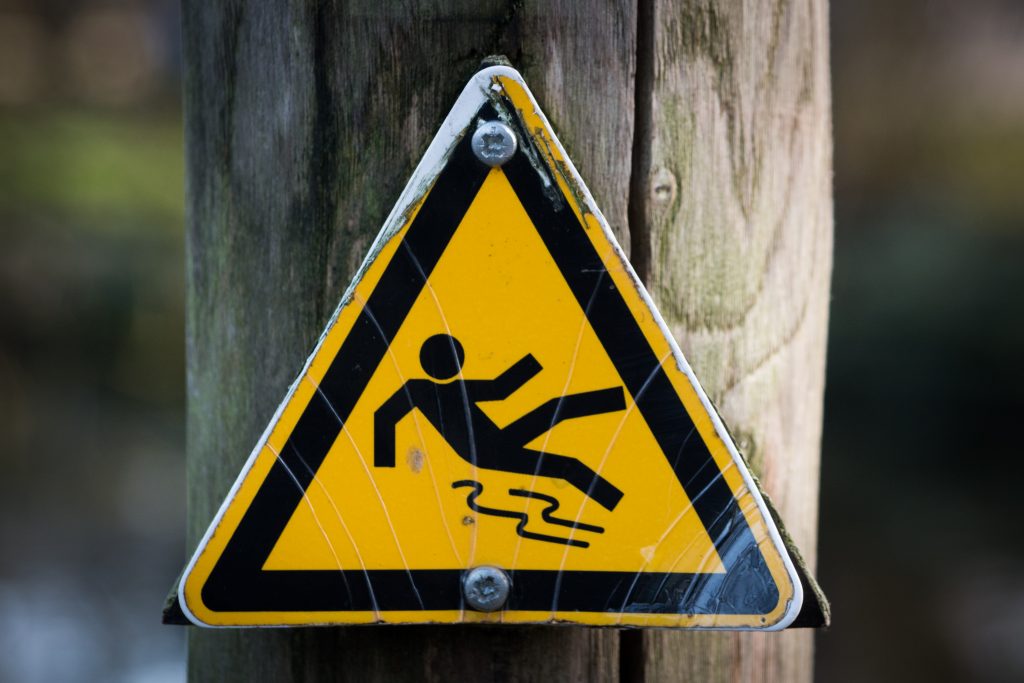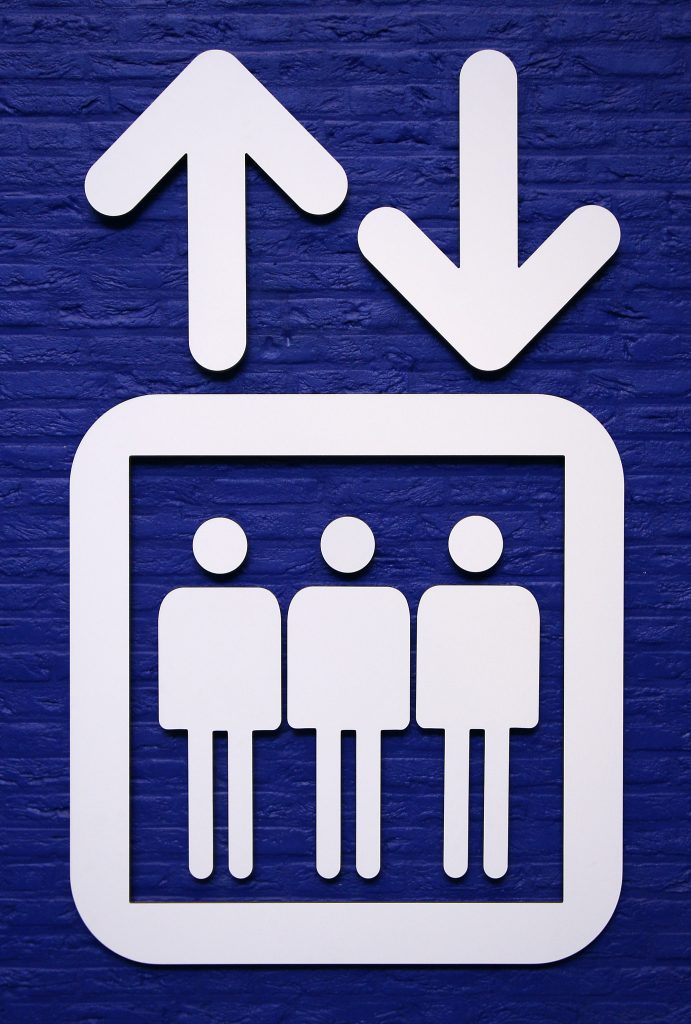 Ice storms can create hazards for the general public as well as employees. A Mansfield nurse found out that parking lot falls do not qualify for workers’ compensation benefits. A Shreveport Hospital was able to avoid paying workers’ compensation benefits with the help of an excellent attorney after the employee’s fall.
Ice storms can create hazards for the general public as well as employees. A Mansfield nurse found out that parking lot falls do not qualify for workers’ compensation benefits. A Shreveport Hospital was able to avoid paying workers’ compensation benefits with the help of an excellent attorney after the employee’s fall.
Joyce Lafitte-Nesom is a nurse manager at Christus Schumpert Highland Hospital (the Hospital) in Shreveport. She typically worked an eight-hour shift from 4:00 pm until midnight. She commuted to the Hospital from her home in Mansfield, Louisiana. On February 11, 2014, the area had an ice storm and many nurses were unable to make their shifts due to the storm. The Hospital was put on diversion and stopped accepting patients due to the shortage of employees.
Ms. Nesom worked until 1:40 am instead of midnight because she was told by Hospital security that the Hospital parking lots were icy and the Hospital was low on materials to apply to the parking lot to help alleviate the slippery conditions. The roads to her home in Mansfield were also closed by the police due to the hazardous conditions. After her shift ended, Ms. Nesom made a decision to wait until the roads were better. She tried to rest in an empty room, but at 5:00 am she gave up and started performing her normal duties. She did not count this toward her working hours for the day. Another nursing house supervisor who lived closer, Ahleeka Cummings, allowed Ms. Nesom to stay at her place until conditions improved.
 Louisiana Personal Injury Lawyer Blog
Louisiana Personal Injury Lawyer Blog


 Witnesses can be critical to winning a personal injury lawsuit after an auto accident. Without an impartial third party to attest to what happened, the case can devolve into he said/she said situation. Even worse, when one party is mentally unable to recall the events of the incident, the outcome becomes even more uncertain. Some may be tempted to think their case becomes a slam dunk after that. With one party not even sure of the facts, the other side has to prevail, right?
Witnesses can be critical to winning a personal injury lawsuit after an auto accident. Without an impartial third party to attest to what happened, the case can devolve into he said/she said situation. Even worse, when one party is mentally unable to recall the events of the incident, the outcome becomes even more uncertain. Some may be tempted to think their case becomes a slam dunk after that. With one party not even sure of the facts, the other side has to prevail, right? Listening is the most important skill for an attorney. This is of paramount importance when following court orders. A lawyer must be careful in how his actions appear and the actions he takes when attempting to enter in a case, but what happens when a lawyer violates court orders?
Listening is the most important skill for an attorney. This is of paramount importance when following court orders. A lawyer must be careful in how his actions appear and the actions he takes when attempting to enter in a case, but what happens when a lawyer violates court orders? If injured on someone else’s property, it is important to know what has to be proven in order for a legal case to go forward. If the injury occurs from a defective structure, then the owner of the premise must have constructive knowledge of the defectiveness. The factors a court evaluates when the defective structure is on public property differ from those of a private owner. So, what happens if you are injured on someone else’s property?
If injured on someone else’s property, it is important to know what has to be proven in order for a legal case to go forward. If the injury occurs from a defective structure, then the owner of the premise must have constructive knowledge of the defectiveness. The factors a court evaluates when the defective structure is on public property differ from those of a private owner. So, what happens if you are injured on someone else’s property? Walmart is buzzing with pedestrian traffic on a daily basis. Where crowds of people are gathered, accidents are sure to follow. Sometimes Walmart’s products are knocked off of shelves, children spill juice in the aisles, and liquid products can slip from a person’s grasp and splatter across the floor leaving a hazardous environment for anyone to slip and fall. Despite Walmart’s best efforts to keep the stores clean, accidents still happen. As a result, legal services may be needed. If that is the case, information about the parties involved is exchanged between the opposing counsels for a period of time known as discovery. Information may be gathered through depositions or a series of questions under sworn testimony out of court. Once sufficient time has been provided for discovery, a party may determine that there is no factual basis for the case to move forward. Because of this lack of material fact, the party may then make a motion for summary judgment. This motion, if granted, can result in a dismissal of the entire lawsuit. Our justice system, however, provides an appeal process for situations where these judgments were granted in error! So, what do you do when you have been blindsided by summary judgement?
Walmart is buzzing with pedestrian traffic on a daily basis. Where crowds of people are gathered, accidents are sure to follow. Sometimes Walmart’s products are knocked off of shelves, children spill juice in the aisles, and liquid products can slip from a person’s grasp and splatter across the floor leaving a hazardous environment for anyone to slip and fall. Despite Walmart’s best efforts to keep the stores clean, accidents still happen. As a result, legal services may be needed. If that is the case, information about the parties involved is exchanged between the opposing counsels for a period of time known as discovery. Information may be gathered through depositions or a series of questions under sworn testimony out of court. Once sufficient time has been provided for discovery, a party may determine that there is no factual basis for the case to move forward. Because of this lack of material fact, the party may then make a motion for summary judgment. This motion, if granted, can result in a dismissal of the entire lawsuit. Our justice system, however, provides an appeal process for situations where these judgments were granted in error! So, what do you do when you have been blindsided by summary judgement? Have you ever been tempted to take a sick day, just because you need a break? Have you ever called in or left early because you are feeling under the weather and you would not be able to forgive yourself if you exposed the entire office to the bug you caught? Although many employees may stretch the truth on sick days sometimes, there are occasions where it becomes irresponsible and unprofessional. One Louisiana man attempted to test the boundaries of worker compensation when he requested medical payments for his sickness. So, how can you determine if someone is faking symptoms in a workers compensation case?
Have you ever been tempted to take a sick day, just because you need a break? Have you ever called in or left early because you are feeling under the weather and you would not be able to forgive yourself if you exposed the entire office to the bug you caught? Although many employees may stretch the truth on sick days sometimes, there are occasions where it becomes irresponsible and unprofessional. One Louisiana man attempted to test the boundaries of worker compensation when he requested medical payments for his sickness. So, how can you determine if someone is faking symptoms in a workers compensation case?  When one is injured by an employee’s negligence, it is reasonable to expect an award of damages from the employer. When an injured party files a lawsuit, however, the plaintiff must prove that the one who caused his injuries was indeed an employee of the business. For most cases, this is very easy to prove. When there is a question of identity, though, the evidence available can make or break the lawsuit.
When one is injured by an employee’s negligence, it is reasonable to expect an award of damages from the employer. When an injured party files a lawsuit, however, the plaintiff must prove that the one who caused his injuries was indeed an employee of the business. For most cases, this is very easy to prove. When there is a question of identity, though, the evidence available can make or break the lawsuit. Essential to winning any legal case is having a good lawyer. However, it is even more essential to have a good lawyer when dealing with tricky cases of negligence against the local government. An oversight caused Kenneth Rivarde’s lawyer to submit an incomplete affidavit from a key witness resulting in a lost lawsuit against the city of New Orleans. Mr. Rivarde’s wife, Channelda Rivarde, perished in a motor vehicle accident at the intersection of North Rocheblave Street and A.P. Tureaud Boulevard in New Orleans, Louisiana. Her husband, Kenneth Rivarde (“Mr. Rivarde”) sued the City of New Orleans (“City”) claiming that the accident was a result of a high-speed chase when the New Orleans Police Department (“NOPD”) was pursuing a fleeing felon. The accident occurred when the felon ran a stop sign and struck the car Channelda Rivarde was a passenger in. So, what happens if your lawyer submits an incomplete affidavit in a fatal car accident case?
Essential to winning any legal case is having a good lawyer. However, it is even more essential to have a good lawyer when dealing with tricky cases of negligence against the local government. An oversight caused Kenneth Rivarde’s lawyer to submit an incomplete affidavit from a key witness resulting in a lost lawsuit against the city of New Orleans. Mr. Rivarde’s wife, Channelda Rivarde, perished in a motor vehicle accident at the intersection of North Rocheblave Street and A.P. Tureaud Boulevard in New Orleans, Louisiana. Her husband, Kenneth Rivarde (“Mr. Rivarde”) sued the City of New Orleans (“City”) claiming that the accident was a result of a high-speed chase when the New Orleans Police Department (“NOPD”) was pursuing a fleeing felon. The accident occurred when the felon ran a stop sign and struck the car Channelda Rivarde was a passenger in. So, what happens if your lawyer submits an incomplete affidavit in a fatal car accident case? In order for a court to assess a fair amount of money to be paid for one’s injuries, it is necessary for the injured party to present sufficient evidence to justify that amount. Without sufficient evidence, it is entirely possible for a court to award an incorrect amount of money to the injured party. A trial court is generally allowed a certain amount of discretion (or freedom) to make a proper judgment. It must, however, come to a reasonable conclusion. An appellate court may alter the award if the judgment is incorrect based on the evidence provided. In 2016, the First Circuit Court of Appeal decided to do just that in a case that involves lost wages over an inability to audition for new jobs.
In order for a court to assess a fair amount of money to be paid for one’s injuries, it is necessary for the injured party to present sufficient evidence to justify that amount. Without sufficient evidence, it is entirely possible for a court to award an incorrect amount of money to the injured party. A trial court is generally allowed a certain amount of discretion (or freedom) to make a proper judgment. It must, however, come to a reasonable conclusion. An appellate court may alter the award if the judgment is incorrect based on the evidence provided. In 2016, the First Circuit Court of Appeal decided to do just that in a case that involves lost wages over an inability to audition for new jobs.  Medical malpractice lawsuits are filed for a wide range of injuries and even death. When a patient finds himself in a scenario where he believes a medical professional could have done more to prevent his injuries or cure his condition, he may decide to go through with a lawsuit. Medical malpractice lawsuits often require expert witnesses to succeed and proving damages in these cases where the patient enters a medical facility sick or injured can be a tough case to win. So, can you lose your medical malpractice case if you do not have enough evidence?
Medical malpractice lawsuits are filed for a wide range of injuries and even death. When a patient finds himself in a scenario where he believes a medical professional could have done more to prevent his injuries or cure his condition, he may decide to go through with a lawsuit. Medical malpractice lawsuits often require expert witnesses to succeed and proving damages in these cases where the patient enters a medical facility sick or injured can be a tough case to win. So, can you lose your medical malpractice case if you do not have enough evidence?